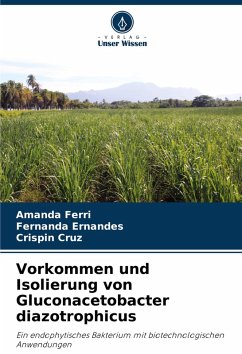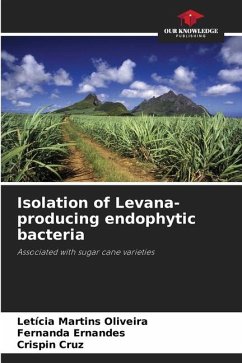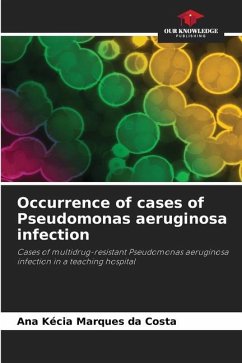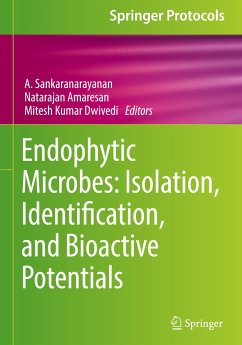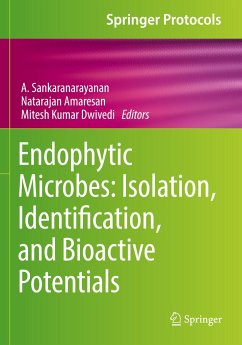
Occurrence and isolation of Gluconacetobacter diazotrophicus
An endophytic bacterium with biotechnological applications
Versandkostenfrei!
Versandfertig in 6-10 Tagen
30,99 €
inkl. MwSt.

PAYBACK Punkte
15 °P sammeln!
G. diazotrophicus is a diazotrophic endophytic bacterium that stands out as a study model for establishing this type of interaction. This microorganism has characteristics with high biotechnological potential, such as the biosynthesis of levan. The aim of this study was to isolate, characterise and select levain-producing strains from endophytic bacteria with similar characteristics to G. diazotrophicus, associated with two varieties of sugarcane grown in the São José do Rio Preto region (SP). In addition, the fermentation efficiency of the isolated endophytic strain was compared to that of ...
G. diazotrophicus is a diazotrophic endophytic bacterium that stands out as a study model for establishing this type of interaction. This microorganism has characteristics with high biotechnological potential, such as the biosynthesis of levan. The aim of this study was to isolate, characterise and select levain-producing strains from endophytic bacteria with similar characteristics to G. diazotrophicus, associated with two varieties of sugarcane grown in the São José do Rio Preto region (SP). In addition, the fermentation efficiency of the isolated endophytic strain was compared to that of Z. mobilis, a microorganism commonly used to synthesise levan. The research was carried out by students Amanda I. R. Ferri and Letícia M. Oliveira from the Pharmacy course at Universidade Paulista, on the São José do Rio Preto campus, under the supervision of Prof. Dr Fernanda M. P. G. Ernandes from the Pharmacy course at Universidade Paulista with the help of Prof. Dr Crispin H. G. Cruz from the Food Engineering course at Universidade Estadual Paulista. The research project was funded by the São Paulo State Research Foundation (FAPESP).





